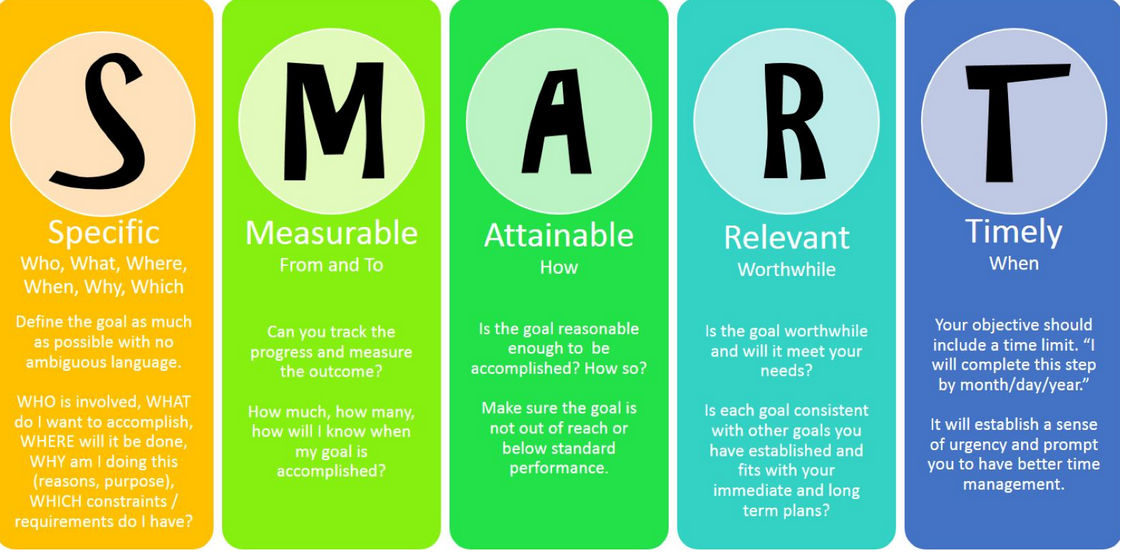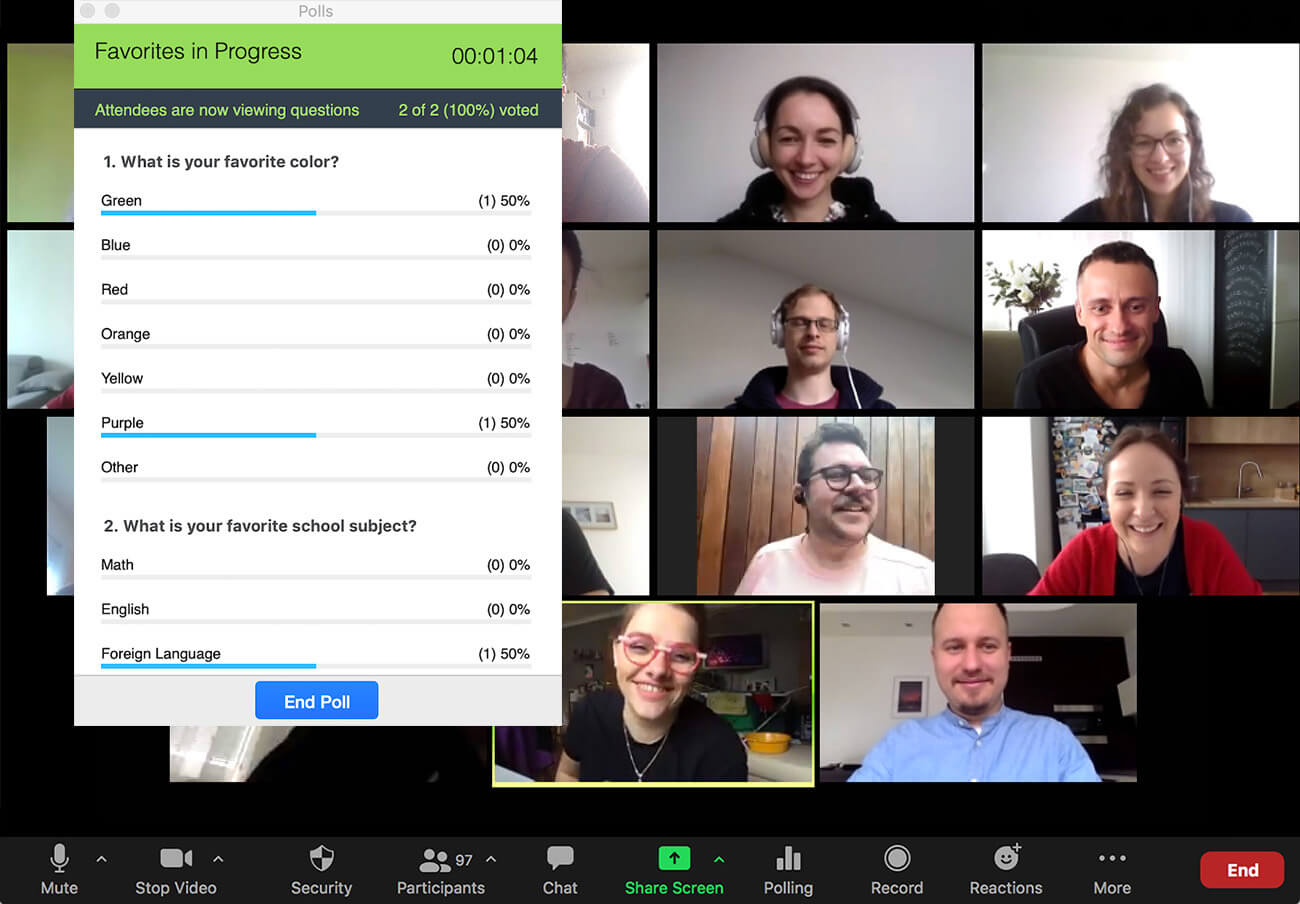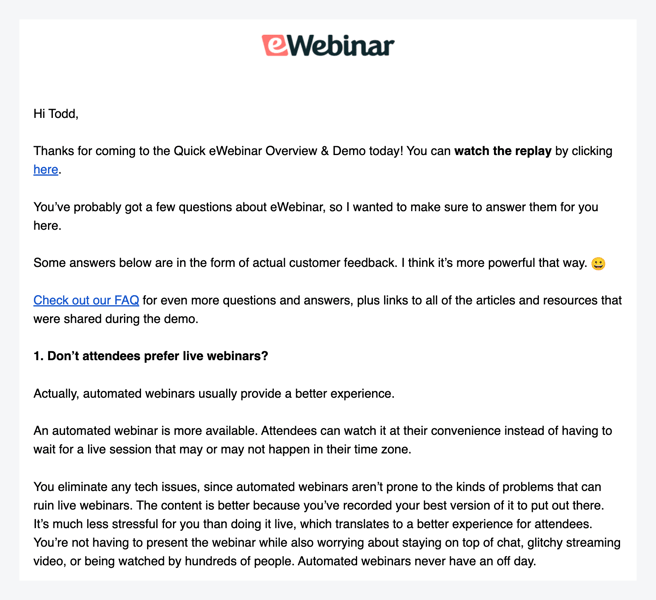Webinars help you achieve a higher degree of success in your content marketing strategy by nurturing customer relationships, establishing brand authority, increasing brand awareness, and generating leads.
In this post, I’ll discuss nine steps on how to leverage webinars in content strategy. Keep reading to discover how to incorporate webinars into your content strategy.
9 steps to leverage webinars in your content strategy
The nine key steps I have listed below contain the best practices that can help you leverage webinars in your content strategy.
Let’s get into it!
1. Understand your audience
Identifying and understanding your target audience is the first step if you want to leverage webinars in content strategy.
Who are you looking to reach with your webinars? What do they prefer? What are they looking for? You need to understand your target audience and create different buyer personas for your webinars to be effective.
To identify your target audience, conduct market research and analyze the top picks in your niche. Also, use social listening tools to identify your audience and their various interests. Understanding your target audience can help you create personalized content that captures their attention.
This allows you to tailor your content around topics that address your audience’s needs and challenges.
2. Identify your goals
Different brands create webinars for different reasons. It could be to generate leads, increase engagement rate, educate an audience, boost brand awareness, onboard customers, or drive sales. Defining your goal is a crucial step that significantly impacts your content and your overall webinar strategy.
You can use the widespread SMART framework when setting your goals:

Source: NewFoundBalance
If your goal is to increase your brand awareness, then your webinars should focus more on your brand as a whole. It’s important to create specific goals but ensuring your goals align with your overall content marketing goals is also essential.
For optimal results, your webinar should closely align with and complement your other marketing strategies. Incorporating this strategy enables you to achieve your business goals. To learn more, read our full guide on Webinar Goals and Objectives: How to Set the Right Ones!
3. Choose relevant topics
A vital part of a successful webinar strategy is choosing relevant topics. First, ensure the topics align with your brand. Look for topics where you have enough experience that aligns with your brand’s expertise and message.
The topics should also align with your audience’s interests. I mentioned why it’s important to understand your audience at the start of this section. Once you understand your audience, create relevant and relatable topics.
For instance, customer service providers could organize webinars on “how to choose the right help desk ticketing system” to help participants choose the right software. Focus on problem-solving while considering current industry developments.
This enables you to deliver content that is relevant, informative, and timely.
Choosing current and educational topics is crucial in order to successfully engage your audience. The audience needs to see that you have a clear understanding of their needs and preferences. By providing just what consumers need, your webinars will be engaging and persuasive.
Tip: Conducting industry research and social listening campaigns will help you identify customer challenges, event industry trends, and ongoing conversations that help you create relevant content.
4. Create compelling content
The reason that people are drawn to webinars is the ability to engage and participate while watching the presentation. Here are a few ways to create compelling content:
- Chat. Respond to attendee questions via chat to help them learn more about the product/service you offer and address any objections or concerns.
-
Visuals. Use visually appealing images to attract your audience's attention in your webinars. You can use slide decks, charts, and other graphics in your content.
-
Storytelling. Utilize storytelling to create compelling content. You should include real-life examples, case studies, and your brand’s story to establish your credibility in an interesting way.
-
Audience participation. Incorporate quizzes and Q&A sessions to get the audience to participate (while collecting valuable customer insights).
5. Promote your webinars effectively
Regardless of your marketing strategy, you need to attract traffic to your webinar landing page. Here’s how you can promote your webinars effectively:
-
Social media marketing. Share your content via social media platforms to extend your reach. Start with organic posts before exploring the prospect of paid ads.
-
Email marketing. You can use cold emails to invite strangers to your webinar, include webinar invites in nurture sequences to reach warm leads, or send invitations to those who subscribe to your newsletter.
-
Cross-platform marketing. Share the information across multiple platforms to maximize and ask guest speakers to promote the event to their audience too.
-
Teaser trailers. Create short videos, posts, or images that provide minimal information to make your audience curious about your webinars. The goal should be to encourage them to register and attend.
6. Encourage interaction
Your webinars shouldn’t just be a one-way conversation they need to be interactive. You can encourage your audience to participate by using interactive elements such as live Q&A sessions, polls, and quizzes. Here’s an example of a live webinar poll.

Source: Zoom
During a webinar session, it’s likely that the participants will have questions or feedback. With a Q & A session, you can make the webinar more engaging. Encouraging interaction can also give you more room to showcase your expertise.
Polls and surveys also help you gain more audience feedback. You can then use this feedback to modify your webinar to suit your audience’s needs. This makes it possible to continuously refine the presentation with each succeeding webinar.
Audience participation makes webinars interesting for both parties. Participants who interact during your webinar are more likely to attend future webinars. Audience participation also helps you gain insight to improve future webinars. It is essential when you leverage webinars in your content strategy.
7. Choose the right software
Technical difficulties can be frustrating for you and your audience. Therefore, choose the best webinar platform for your needs. When selecting the right software, consider your needs and requirements first. Look out for a platform that can handle your projected audience size.
Look for software that offers enough interactive features and AI tools. Remember to consider the functionalities, pricing, and user reviews. As explained in this guide from Attrock, multiple elements are included for hosting a successful webinar and it requires a good cost to host a webinar.
To effectively leverage webinars in your content strategy, you’ll need software to host webinars smoothly on various devices. Ensure you run tests on your chosen platform to help you avoid unwelcome surprises. Test the platform's different tools and features to see how they function.
This will help reduce technical glitches during live webinars (but won't solve issues like latency.)
8. Record and repurpose
Members of your target audience may not be able to attend for various reasons. This, among other reasons, is why you should record your webinar sessions. You can leverage a good screen recorder to record your webinars.
The information you shared during the webinar might be useful to new leads in the future. Participants can also watch the recording at their convenience if they're unable to attend the live event. You can even take this a step further by building an on-demand webinar from the get-go.
In addition to recording your webinars, you should convert them into various formats to spread their reach. You can create blog posts, short video content, ebooks, or checklists from live webinar sessions. Leverage webinars in your content strategy to ensure more people can benefit from your content.
Lastly, repurposing your content can help you attract registrants for future webinars.
9. Follow-up and nurture leads
Congratulations on your hosting your webinar!
However, the job's not done yet. After the webinar, it’s important to follow up and nurture the leads you gained through the webinar. Ensure you appreciate the participants. Show them you value their attendance and would love to have them at future webinars.
You can then share recordings and helpful resources. You can also request feedback on their overall experience at the webinar. To nurture the leads further, you can send follow-up email sequences. You can also send them product offers and relevant resources about your brand.
Here’s an example of a follow-up email automatically sent to attendees by eWebinar:

Be sure to exercise patience when nurturing leads to loyal customers as you don’t want to come off as too pushy and have them unsubscribe altogether. After all, it can take multiple touchpoints and interactions before leads are ready to convert.
Conclusion
Webinars are undoubtedly a powerful means of engaging your audience, establishing brand authority, and achieving your overall marketing goals. If you understand your audience, identify your goals, create relevant topics, and develop compelling content then you’re bound to get results.
Specifically, leveraging webinars in your content strategy can help you gain new leads, boost your brand’s reach, and achieve your marketing objectives. With the attendee feedback and webinar analytics, you can continuously optimize your strategy over time.
Author bio: Reena is the Director of Operations and Sales at Attrock, a result-driven digital marketing company. With 10+ years of sales and operations experience in the field of e-commerce and digital marketing, she is quite an industry expert. She is a people person and considers human resources as the most valuable asset of a company. In her free time, you would find her spending quality time with her brilliant, almost teenage daughter and watching her grow in this digital, fast-paced era.








